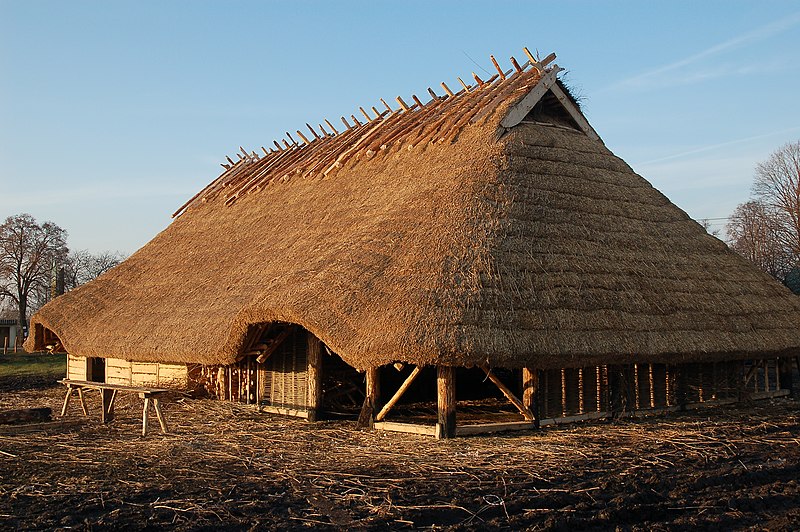In the Lubelskie Voivodeship, in the village of Masłomęcz near Hrubieszów, there is an open-air archaeological museum known as the Goths’ Village.
Its history dates back to 1977 when a small group of Lublin archaeologists began their search inspired by small research reports on the so-called Golden Treasure of Metelin and a cemetery and individual Vandal graves. The work was carried out by the Archaeological Research and Conservation Centre under an agreement between the Rector of the Maria Curie Skłodowska University in Lubin and the Zamość Governor. The centre was managed by the heads of the Department of Polish Archaeology of the Maria Curie-Sklodowska University, without receiving additional remuneration for this work. Over many years of research, three major sites were identified, at Masłomęcz, Gródek and Hrubieszów, and the discoveries were linked to the Goths.
The Goths were one of the largest East Germanic tribes, originally inhabiting the south of the Scandinavian Peninsula. From the 1st century AD they migrated southwards. In the middle of the 3rd century, they reached the Black Sea, in areas neighbouring the Roman and Greek provinces, thus finding their place in written history.
The scale of the discoveries in the Hrubieszów area surprised researchers, allowing them to define the so-called Masłomęcz cultural group, spread between the Huczawa, Bukowa and Bug rivers and forming part of the Gothic culture circle. The settlements existed from the end of the 2nd century until the turn of the 4th and 5th centuries. The discovery became famous in Europe, as no major Gothic settlements are known from this period. Favourable natural conditions (soil characteristics) contributed to the state of preservation of the settlements and cemeteries. The innovative working methods used during the excavations and reconstructions were called the Masłomęka school.
Discovered objects such as artfully made necklace clasps, bracelets cast in bronze and covered with silver, tin or gold, and even a forged Roman coin testify to the high development of the art of craftsmanship. The craftsmanship, the preserved road fragments and organisation of the Masłomęcz necropolis have allowed some of the archaeologists working at the sites to hypothesise that the settlement at Masłomęcz functioned as a so-called proto-city. It was a local centre of economic and cultural life.





